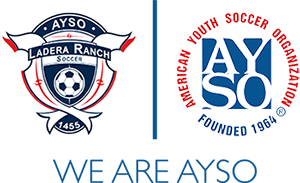The biggest difference you already made for your team for this game was the lineup. Still, a coach can have a big (and positive) impact on the game provided they are doing the correct things. There other areas where you have influence:
- Pregame warmup
- Pregame review
- Providing on the field instruction
The last bullet is the subject of this article, and it’s an important subject. This covers all the comments and verbal instructions you provide to your players while the ball is in play.
On the Ball vs Off the Ball
This is the most important concept to learn. An “on the ball” command refers to an instruction made to the player in the center of the action and is typically the ball carrier. “Off the ball” simply refers to players that are not immediately in the position of having to make a decision with the ball.
Examples of On the Ball coaching include: “shoot it”, “cross it”, “pass to Sally”.
Examples of Off the Ball coaching include: “mark up #9”, “make a run and call for it”, “cindy, support”.
A lot of coaches get in the habit of “joystick” coaching–meaning they are bringing a play-calling mentality to soccer. We’ve all done it, even if we know better, mainly because (in the short term) it works. The problem is that you rob the players of the opportunity to make their own decisions. Done often and it dulls the development of players because they aren’t getting used to thinking for themselves in critical situations.
In short, don’t do it. If you need more evidence you’re welcome to search around for articles like this that provide a more detailed case. You can also include a link to that article in your parents communication when reminding them that they too should refrain from coaching.
So what are the types of things you can (and should) be helping your players out with:
- Positional related – Maybe your Forward isn’t pushing up enough, maybe your defense isn’t marking up, maybe there is a very fast forward on the other team and you need your defense to give that player more room, etc
- Coverage related – Soccer is fluid game and players need assistance in tracking who might be the correct opponent to match up against
- Movement off ball – Recovering, providing support, and making forward/overlapping runs are not easy concepts for younger players to understand. Help them understand when then really need to be expending energy
- Recognition – I always try to get to at least a 2:1 ratio of positive reinforcement to instructional. What you DON’T want is for every time for player to hear his/her name called out during a game for it to be a negative, they will start to dread hearing your voice. Call out the good too! You can be especially helpful when you recognize that a player is attempting to execute on a concept (successful or not) that you’ve been working on during practice. Let them you know you saw that effort and appreciate it! It provides a reminder for other players and also helps parents understand dynamics of the game they may not have recognized
While this can be one of the toughest things for coaches to abide, it’s very worth it for the long term development of the player to let them make their own decisions. As you’ve seen here there is more than enough other ways you can contribute to keep you actively involved in the game.



Leave A Comment